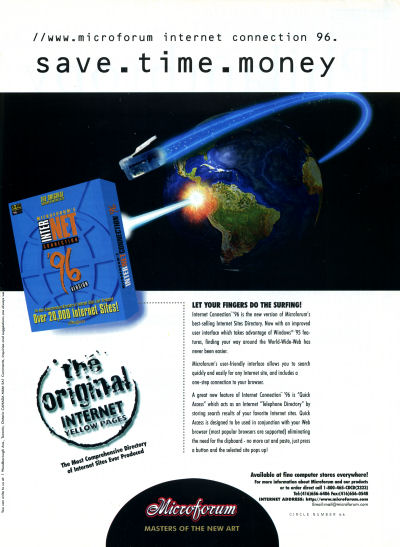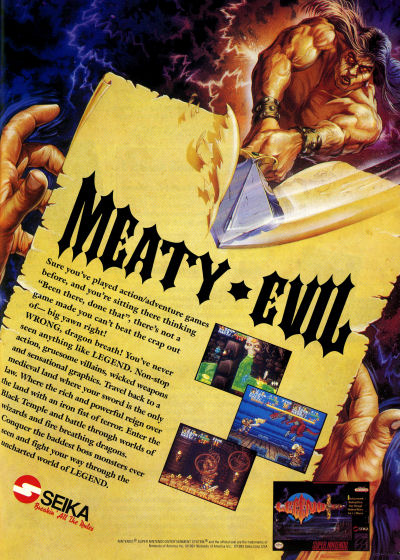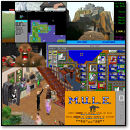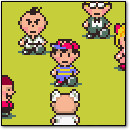[ Retro Scan of the Week ] Kodak Photo CD
Monday, February 2nd, 2015 Because the best place to look at photos has always been your TV set
Because the best place to look at photos has always been your TV set
In September 1990, Kodak announced a brand new system for storing and viewing photographs: Photo CD. At a time when Compact Discs represented the vanguard of consumer electronics technology, Kodak capitalized on the excitement by blending digitized photos with a custom CD format.
Kodak designed that format for viewing through special a Kodak CD Player device (think DVD player for still photos) that hooked to a standard TV set. Using such a player, one could view the digitized photos via a virtual slideshow.
It would not be until August 1992 until Kodak finally launched the system, releasing its first Photo CD player and beginning production of Photo CD discs for customers.
With a base image resolution of 512 x 768, Photo CD was far from an archival medium. It tried to offer convenience, but instead ended up adding needless cost and encumbrance to the photo viewing process. In an era before most people were equipped to view, edit, or print digital photos from a PC, the fact that the photos came in an electronic format did not add anything notable to the experience. Predictably, adoption of the Photo CD system never gained much steam. (Wikipedia’s article on Photo CD has some pretty good additional analysis of why Photo CD never took off.)
I personally remember encountering a Kodak Photo CD player in either a photography store or a Radio Shack as a kid. I thought it was amazing — your own photos on a TV set! But my dad, an experienced photographer, never bought into the system.
P.S. For more CD history, check out my Compact Disc 30th Anniversary article that I wrote back in 2012.
Discussion Topic of the Week: Did you ever use the Kodak Photo CD service or own a Photo CD player?
[ Retro Scan of the Week ] Turbo Touch 360
Monday, January 26th, 2015 Man, that basketball player is pissed.
Man, that basketball player is pissed.
The Super NES / Genesis era coincided with a second golden age of third-party video game controllers and peripherals (the first golden age being the Atari 2600 era). If you browse through the Retro Scan archives, I’m sure you’ll see quite a few.
One of the stand-out gimmicks of this era arrived courtesy of Triax Technologies: the Turbo Touch 360. Representing a series of controllers for various platforms (SNES, Genesis, and NES with IBM planned, but I’m uncertain if it launched), the Turbo Touch line relied on a touch-sensitive pad in lieu of a traditional D-pad.
Using the touch pad, you didn’t have to physically push down on the D-pad to register movements; instead, you lightly slid your finger over the cross-shaped touch pad, sort of like a laptop touch pad. Ideally, this should result in quicker movements, but it could also result in more errors.
There was another supposed benefit to the touch pad technology as well. This 1993 Chicago Tribune article positions the Turbo Touch as a cure for game-induced thumb blisters (at the suggestion of Triax’s marketing staff, as the article suggests).
I’ve heard a lot about people getting thumb blisters over the years while playing video games, but I’ve never actually seen it happen. That’s because I’ve only heard about it through game peripheral advertisements. Such blisters are plausible, of course, but you’d have to push down on the D-pad very hard and rub it around over a long period of time. Maybe my thumb skin is just tough or something, but it’s never been a problem for me.
(Full disclosure: I did get a blister in the middle palm of my hand by rapidly rotating a Suncom Slik Stick over and over for about an hour while playing Decathlon for the Atari 2600 in the early 1990s)
I’m not saying that no one ever got a thumb blister from playing a video game, of course (do a Google search) — just that it wasn’t the epidemic that companies like Triax have led us to believe.
Call me skeptical, but I wouldn’t be surprised if the the video game thumb blister meme originated as a marketing angle in an era that aimed to be loud, raw, and edgy (think “Play it Loud“, Sega scream, etc.). What could be edgier than actually getting physically injured while playing video games? That’s intense!
I actually own a Turbo Touch 360 pad for the Genesis that I never got around to trying for some reason (I bought it at a thrift store when my Genesis was packed away). Right now I have no idea where it is. Perhaps I should dig it out and put the promise of touch-fueled gameplay to the test.
Discussion Topic of the Week: Have you ever gotten a blister from playing video games? Tell us how it happened.
[ Retro Scan of the Week ] The Secrets of Obitus
Monday, January 12th, 2015 Dare ye gaze into the sacred gems of immortality?
Dare ye gaze into the sacred gems of immortality?
Here we have an ad for the Super NES port of Obitus (1994), a Psygnosis RPG for the Amiga, Atari ST, and MS-DOS originally released in 1991.
I’d like to say I’ve played this one, but I can’t for the life of me remember if I actually liked it. I know I tried it, especially after first scanning this ad some years ago. Is anyone out there a fan of either the PC or SNES versions of Obitus? It sure looks cool.
Discussion Topic of the Week: In your opinion, what’s the best PC to video game console RPG port of the 1980s or 90s?
[ Retro Scan of the Week ] Google in a Box
Monday, December 1st, 2014 “The Most Comprehensive Directory of Internet Sites Ever Produced”
“The Most Comprehensive Directory of Internet Sites Ever Produced”
18 years ago, a fairly complete index of the entire Internet — circa 1995 — could fit on a single CD-ROM — about 20,000 sites, as the box for Microforum’s Internet Connection ’96 says. [Update: See comments below for a discussion on the number of websites in 1995 and 1996] I ran a website back then, and the Web did indeed feel that small. FTP sites were still a big deal in those days, so that number may include them as well.
Today, some estimates say that the Web alone consists of over one billion websites. Consider storing a simple list of one billion websites URLs. If each URL was about 25 characters long (I’m just making this up as an example), it would take around 25 gigabytes to store the list alone (or about 39 CDs worth). Google stores that list and copies of individual websites for caching. Needless to say, that takes quite a bit more storage room.
So it’s amusing to think back to a time when you might actually buy a professionally mastered and duplicated CD-ROM containing web addresses, many of which were potentially obsolete by the time the disc landed in your hands (I just used Yahoo’s web directory). Now we have Google. Imagine that: using the Internet to index itself.
Discussion Topic of the Week: What year did you create your first website?
—
See Also: Internet In a Box (RSOTW, 2014)
[ Retro Scan of the Week ] Family Quizagon Night
Monday, November 24th, 2014 “Whoa…what’s in these brownies, Grandma?â€
“Whoa…what’s in these brownies, Grandma?â€
Thanksgiving is almost upon us again, so it’s time to gather around your home PC for a game of…Quizagon?
Yes, Quizagon. A game I’ve never played, nor will I for the foreseeable future. It looks like a hexagon-themed family trivia game, which is not my bag, man. But what a great photo.
Instead, I’m going to host a The Seven Cities of Gold marathon on an Atari 800XL with my brother. We plan on exploring a completely new continent while interacting vigorously with the natives. Meanwhile, my brothers- and sisters-in-law will be playing Sonic & All-Stars Racing Transformed on my dedicated gaming PC that is hooked to the flat-screen living room TV. It’s a great kart game to play on Steam with four Xbox 360 controllers that’s easy to set up and jump into. Fun times shall be had by all.
By the way, I first used this amusing scan in a 2009 Thanksgiving-related slideshow I did for Technologizer (hoping I’m not repeating it on VC&G). If you’re in the mood, here’s some other Thanksgiving-related material from the VC&G archives.
Discussion Topic of the Week: Do you have any family video gaming planned for this Thanksgiving? If so, what are you going to play?
[ Retro Scan of the Week ] Fujitsu Micro 16s
Monday, November 17th, 2014[ Retro Scan of the Week ] Fighters MegaMix
Monday, November 10th, 2014[ Retro Scan of the Week ] Memotech ZX81 Modules
Monday, November 3rd, 2014 Extend your ZX81 a full ten inches
Extend your ZX81 a full ten inches
The Sinclair ZX81 (marketed in non-kit form as the Timex-Sinclair 1000 in the US) was a tiny computer with a tiny price and tiny capabilities.
It was possible, however, to make up for some of those shortcomings with a wide array of plug-in peripheral modules from Memotech, seen here in this ad from 1983. Furthermore, by piggybacking one module onto the next, it was possible to create an even more capable — and far longer — ZX81.
I wish I had some of these Memotech modules to mess around with. All I have is the bulbous Timex-Sinclair 16K RAM Module. Time to check eBay.
Discussion Topic of the Week: What’s the smallest non-portable computer you’ve ever used? (e.g. Timex-Sinclair 1000)
[ Retro Scan of the Week ] Meaty Evil Legend
Monday, October 27th, 2014I thought I had some Halloween-themed scans saved up for this year, but it looks like I don’t. My magazines are in cold storage at the moment (buried somewhere under the Arctic tundra), so I can’t get to them to scan a new one.
Time to fall back on some old scans. This looks pretty scary, right? I wouldn’t like to run into that zombie warrior in person.
Thinking back, I recall that I scanned this particular ad for Seika’s Legend in 2006 while working on my Game Ads A-Go-Go column (Simon Carless thought of that name, by the way) for the now defunct GameSetWatch. Back then, I didn’t keep track of which issue each scan came from, so I’ll have to come back later and update the post when I run across the ad in a magazine again.
[Update: 09/07/2015 – I found the source for this scan and updated the info below.]
As for the game this page advertises, I know very little about it. I just now played Legend in a Super NES emulator to refresh my memory. It is a fantasy-themed arcade beat-em-up similar to Golden Axe. It controls like sludge (your guy moves with the speed and agility of a slug) but has two-player co-op (always a winning feature) and is fairly fun if you have the patience to stick with it.
Me? I don’t like walking at 0.3 miles per hour in a game, so I only played it for two minutes.
Discussion Topic of the Week: What’s your favorite beat-em-up game?









